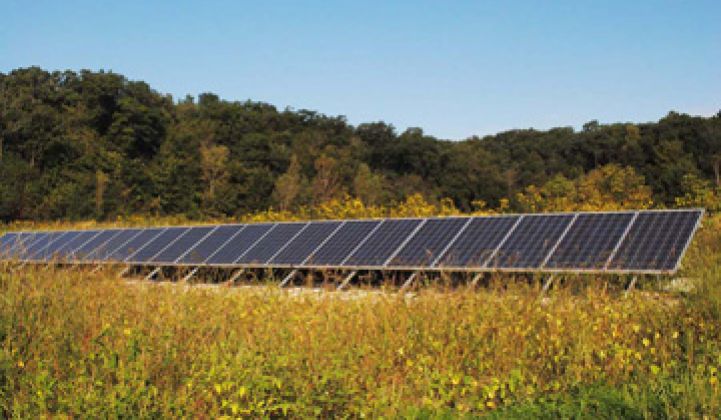When PSE&G, the largest utility in New Jersey, announces that it’s investing nearly half a billion dollars in mid-scale solar, developers in the West should take notice. Why? Because the Garden State, in addition to being blessed with rich soil, has an abundance of brownfields and landfills upon which the utility will build dozens of megawatts of new photovoltaic capacity.
Building on brownfields and landfills cuts down on -- or perhaps completely eliminates -- the kind of resource conflicts that have frequently plagued large-scale solar projects in California, particularly those on public lands.
As a result of these minimized externalities, these projects were ushered through the permitting process by the state, receiving an enthusiastic “debut” at a Hackensack brownfield with the seemingly omnipresent Governor Chris Christie. Instead of litigious environmental review processes, and protests by activists, these projects appear to please everybody. There’s no “green-on-green” revolt, as the controversy over utility-scale solar in the West has been characterized in the media. There’s none of the escalating level of vitriol which has frequently flared up around these projects in the Golden State. And indeed, there are none of the significant environmental, archaeological, and social impacts associated with large-scale deployment of solar on previously undisturbed lands.
While critics have been predicting the end of the California solar gold rush, solar is booming in New Jersey, a rainy state possessing a solar influx comparable to that of Portland, Oregon, and yet which is second in the nation installed solar capacity, behind only California. The recent PG&E announcement will push New Jersey past 1 gigawatt of solar capacity, which on a per-capita basis far outpaces California.
As does Arizona, whose utility-scale solar installations are generally located on previously disturbed farmlands. The Grand Canyon State has a booming solar energy zone in the area of Gila Bend, Arizona, where farmland whose salinity levels got too high due to desert irrigation now is pumping out megawatts' worth of photovoltaic power. None of these projects have been marred by protest and rancor. California has the potential to follow suit as the Desert Renewable Energy Conservation Plan (DRECP), currently under preparation, is evaluating the prospects for appropriate solar development over the whole spectrum of lands in the California desert: public and private, pristine and degraded.
The EPA released a toolkit last year, the RE-Powering America’s Lands Initiative, which identifies contaminated lands and abandoned mining zones which would be appropriate for minimum impact renewable energy development. Arizona BLM actually took this a step further, conducting a survey of all public lands in the state that might be available for renewable energy development. The BLM pre-designated 192,000 acres (out of a possible 12.2 million acres) that were suitable due to minimized resource conflicts, pre-disturbance, lack of water impacts and other criteria. While development on these still-remote desert lands is not guaranteed to go as smoothly as has development on brownfields in mostly residential New Jersey, it is not likely to be as much of a lightning rod as the controversial Ivanpah project has been.
There are clear differences between the development of large-scale solar projects in New Jersey and the open spaces of the West, not least of which is the complicated politics of place. Nonetheless, when one compares the amount of money and time spent on mitigating the impacts of developing solar on undisturbed lands with the relative regulatory ease of building on contaminated or degraded lands, there is a clear advantage to the latter. While environmental regulatory inspiration typically flows eastward, at least in this case, California would do well to follow New Jersey’s example. The Garden State is pioneering bold thinking in the siting of solar facilities.
***
Patrick Donnelly-Shores writes about energy policy issues for the UC Berkeley Energy & Resources Collaborative (BERC).



